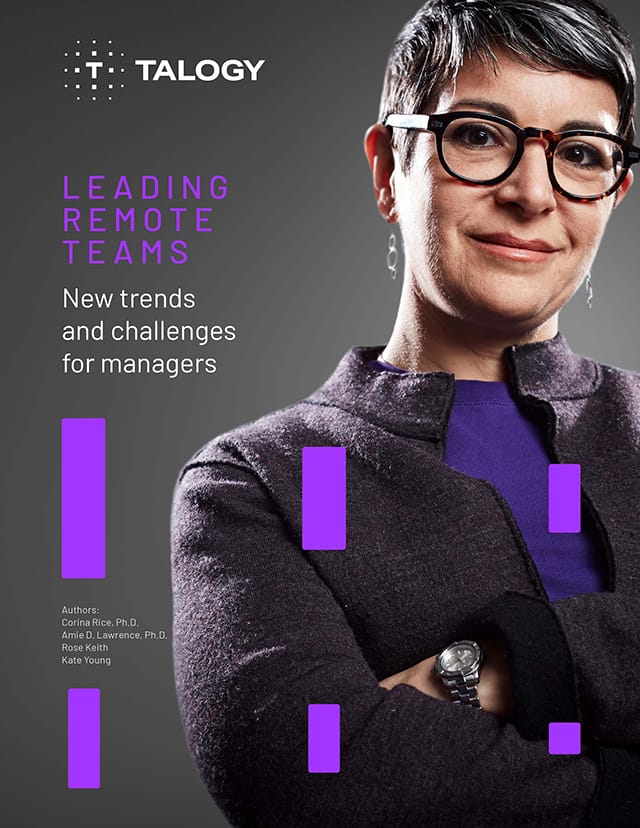Written by Dr. Jo Maddocks, Chief Psychologist
This is the third blog in a series of four in which I discuss the four stages of change and resilience (from the Talogy Thrive Cycle) in relation to the COVID-19 pandemic and lockdown. In the first blog, I discussed our initial survival response to adversity and the pandemic. In the second blog, I discussed how we adapt to change and adversity, and in this blog, I will discuss the Recover stage and how we can bounce back from setbacks in life.
In the Recover stage of the process, we often experience feelings of frustration, boredom, and anger. If harnessed, these feelings can be useful as they motivate us to change our circumstances. They can also reveal some of our hidden strengths, such as determination, courage, and resourcefulness. All vital attributes if we are to recover from the situation we are faced with and get back to where we were before the crisis began.

All feelings are useful and have an evolutionary basis. The feeling of anger, for example, stems from a sense of injustice and gives us the energy to rectify a situation and stand up for ourselves. Most social change and progress in society would not have happened without this feeling being present. If we want to move on from the Adapt phase, it is necessary to be galvanised into action, to yearn for change, and to desire a different outcome. Without this, we would simply accept the status quo and be resigned to our fate. Human nature, however, is not built this way. People are innately predisposed toward progress and advancement. We quickly become restless and agitated, which pushes us on to seek solutions to our problems and to improve our circumstances.
Recovery from the pandemic will be multi-faceted – physical, emotional, interpersonal and financial, all of which have an impact on our psychological state. Some predict that organisations will bounce back from the pandemic, others say it will take years to recover, and with inevitable relapses. Either way, the demands on employees will be immense. For some, it will mean intense work to regain lost ground, others will experience redundancy and financial hardship. The way we work in the future may change dramatically after the pandemic. Remote working, social distancing, restricted travel, and different forms of communication may become the new norm. In order to recover from the multiple challenges of the pandemic, we will need to embrace new ways of working with a positive and proactive attitude. Here are a few suggestions to assist in the recovery phase of transition.
- Take Action: Recovery will never happen if we procrastinate. Whether this is going to the gym, writing a blog, or getting back into the routine of work. Excuses abound for why we do not create the changes that we desire. “It wasn’t the right time”, “I need to feel inspired first”, “I will start it tomorrow”. Yes, sometimes this is true, and there will be a moment of enlightenment or we will hear the “Rocky” theme song playing in our heads, but for most of us most of the time motivation comes from taking action, not the other way around. Physiologically and psychologically, we need to get our body and brain in motion for us to be firing on all cylinders. Many of you will recognise that the first few minutes of exercise can be the most difficult, or sitting down to type the first few words is the most painful part, or getting out of bed for another day of work is the most challenging part of the day. Which brings me to the next piece of advice.
- Take Small Steps: The first objective may be the first step in the process, such as “to get out of bed”, “to pick up the phone”, “to arrange a meeting”, or “to put on your running gear”. Doing the first step will very often lead to the second step, partly because our automatic procedural brain will then take over. The more frequently we do something, the more automated and less demanding it will feel. Did you know there are about twenty steps to making a cup of tea? Filling the kettle is just step one. For many of us, recovery from the pandemic will be going back to well-rehearsed routines, for others it will require doing things differently from before.
- Visualise Doing It: In my first blog, I mentioned the importance of using our imagination to create positive thinking and outcomes. Visualisation is much the same, but with a more specific purpose in mind. Sportspeople use visualisation to picture themselves perfecting their art. A word of caution here too. Visualisation is not about picturing yourself crossing the finish line of a marathon or getting a huge round of applause for making the world’s best presentation. It is visualising yourself doing the activity – picturing yourself running gracefully or delivering a presentation with confidence. When we close our eyes and visualise ourselves doing this action, our brain fires off the same neurons as if we were actually doing it, laying down and reinforcing new neural networks. Through mental rehearsal and practice, neural networks become embedded and will be triggered automatically when we take our first step in the process (putting on your running gear, picking up the phone, standing on stage, etc.). In effect, our imagination is a reality generator, turning our expectations into reality.
In my next and final blog, I will discuss the fourth stage in the Thrive Cycle in relation to the pandemic. How we can thrive, learn, and grow following change and adversity.




